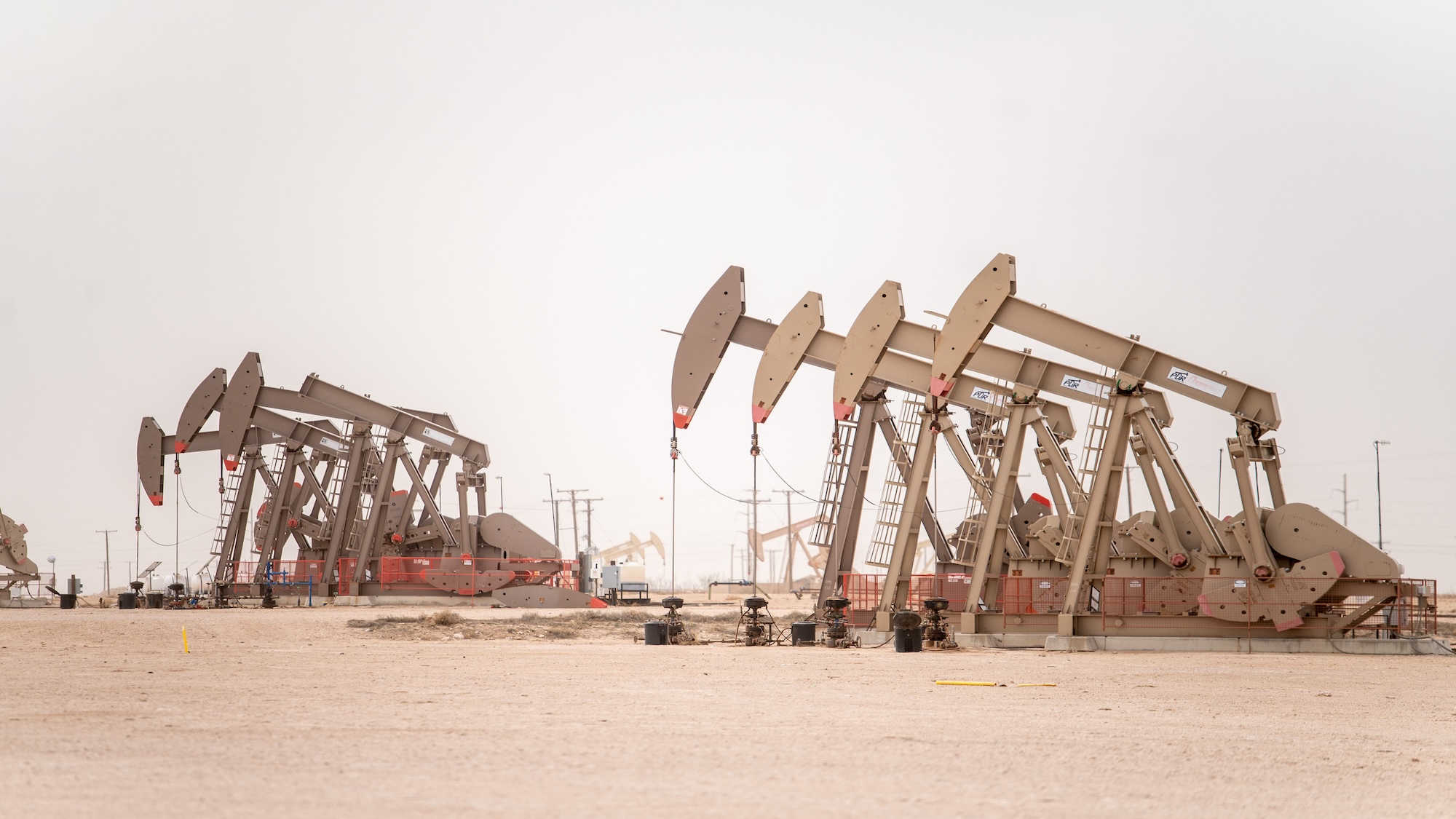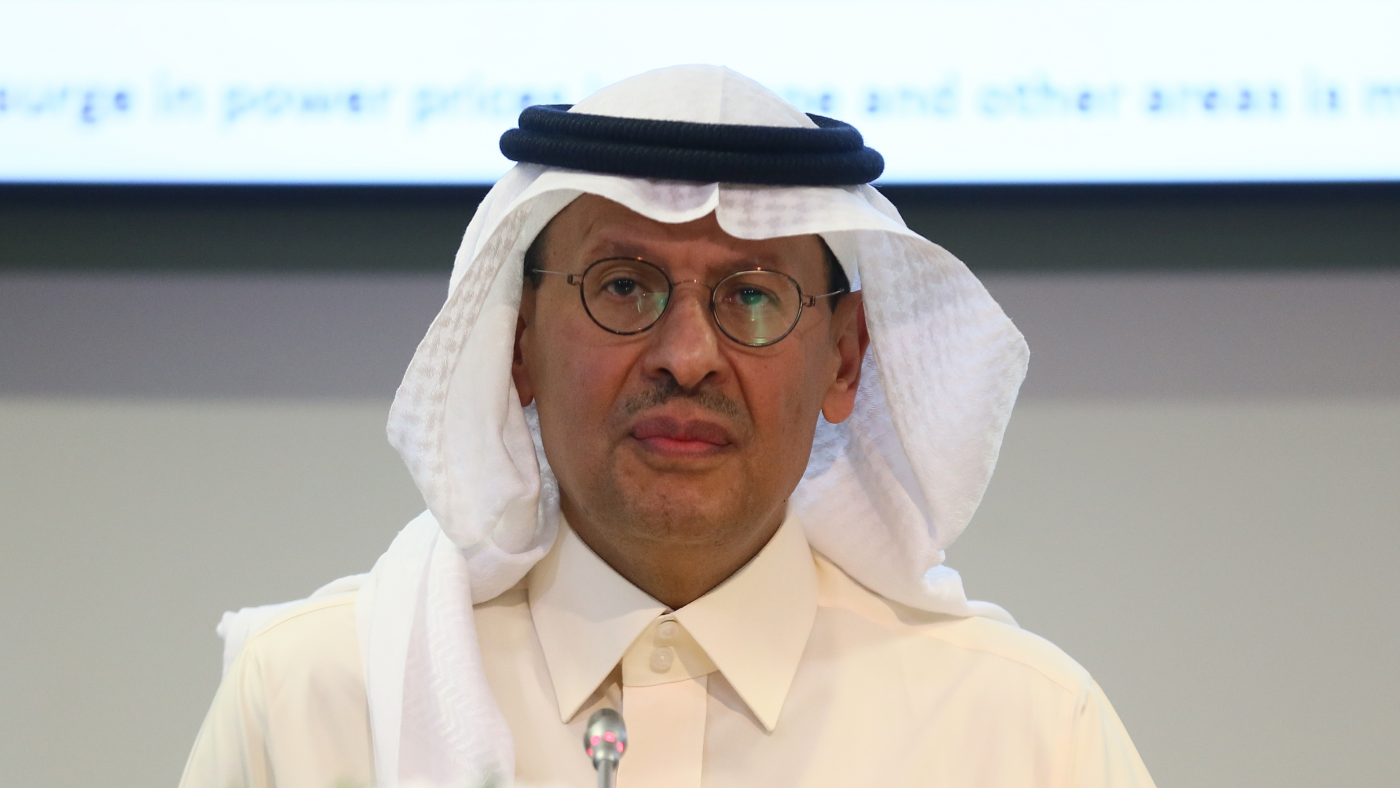Oil price posts two-year highs - but how long can it last?
Brent rose above $59 a barrel this week, its best third-quarter showing since 2004

Oil price: Three-day dive puts focus on supply report
6 July
The oil price has resumed a downward swing, tracking a trend on wider markets that had recovered strongly last week from an initial sharp post-Brexit slump.
Brent crude moved lower for a third consecutive session in New York last night, closing well below $48 a barrel. The slide continued into London trading this morning, with Brent 1.2 per cent lower at $47.37 at around 11.30am.
The Week
Escape your echo chamber. Get the facts behind the news, plus analysis from multiple perspectives.

Sign up for The Week's Free Newsletters
From our morning news briefing to a weekly Good News Newsletter, get the best of The Week delivered directly to your inbox.
From our morning news briefing to a weekly Good News Newsletter, get the best of The Week delivered directly to your inbox.
US benchmark West Texas Intermediate was this morning 1.1 per cent lower at a little above $46 a barrel.
Confidence the Brexit effect on oil had worn off has been proven misplaced. While not directly affected by the vote, the impact on currency markets has profound implications for the commodity and the latest slump came as the pound dived to below $1.28 - a new 31-year low against the dollar.
This makes the dollar stronger and renders oil more expensive to foreign buyers, which is seen as negative for demand.
Added to that are fears a major slowdown in growth in the UK, Europe and beyond could hit already underwhelming forecasts for demand growth this year. All of this undermines the assumption that the two-year global supply glut is a thing of the past.
A free daily email with the biggest news stories of the day – and the best features from TheWeek.com
Ultimately the indirect consequences for supply and demand are beyond all of oil's price turns – and it had been supported higher in recent weeks by output outages for example in Nigeria.
Reuters notes that sentiment could shift after tomorrow's major report on crude oil reserves in the US. Stocks are expected to have fallen for the seventh consecutive week, while gasoline reserves will be in focus having been far more volatile.
"Oil once again is testing key support levels and the inventory report will be the next focus, especially the level of gasoline inventories," said Ole Hansen, a commodity strategist at Saxo Bank in Copenhagen.
Oil dips back below $50 on wider economic worries
05 July
A day of falls saw the oil price dip back below $50 on Monday, as market sentiment on the wider economy took a negative turn.
In overnight Asian trading, international benchmark Brent crude fell one per cent to around $49.60 a barrel. It was down more than two per cent at a shade above $49 by around 10.15am in London today.
US counterpart West Texas Intermediate was down 2.6 per cent to below $48 a barrel this morning.
The fall was part of an unravelling of a rally on wider equity benchmarks, which marked a rebound following the sharp dip after the EU referendum result. Markets dropped sharply while this morning, sterling hit a new 31-year low against the dollar.
The weak pound is still influencing oil, as any boost to the dollar makes the commodity more expensive for overseas buyers and could dampen demand.
However, the main reason for the hit, says Reuters, is renewed concern over the global economy, which would also be negative for demand. UK construction activity was yesterday shown to have fallen sharply into contraction before the referendum result was even announced.
There are also expectations that data in the coming weeks will show continued weakness in China, which has become one of the most important markets for oil.
Nevertheless, prices are being helped by improved sentiment on supply, which has grown in recent months, ensuring oil does not dip too far and remains in a narrow range near $50.
Added to this was yesterday's news that renewed sabotage attacks by rebel forces in Nigeria could hit output from the country. Exports were already down to 1.37 million barrels in May, a drop of 500,000 barrels a day, reports the Wall Street Journal.
Oil rooted around $50 as supply comes back into focus
04 July
After being steadier in recent sessions, the oil price looks rooted around $50 a barrel, as the Brexit effects fade and focus returns to the global supply situation.
At around 11am in London this morning, the price was up around 0.4 per cent at $50.60. US counterpart West Texas Intermediate was up 0.3 per cent at $49.15.
The precipitous fall in the wake of the referendum came as the pound slumped to a 30-year low against the dollar, which boosted the greenback against a basket of international currencies and made oil more expensive for overseas buyers.
Sterling has steadied in recent sessions, but remains at a relative low of below $1.33.
Wider markets have recovered their poise and risk assets are on the rise more broadly as central banks promise more policy easing. But oil's gains have been limited by concerns the market could return to oversupply.
Reuters notes that Nigerian output rose last week following repairs to pipelines damaged by sabotage attacks, while Canadian production is also coming back after the wildfires of May. Russian exports jumped last month and Libya looks set to send more barrels out as well.
Crucially, last week, US shale producers added new drilling for the "fourth week in five", which suggests that higher recent prices are bringing stalled supplies back on line.
All of this is acting against a recent trend of reserves draw-downs, which had prompted hopes the market was sustainably back in balance. Until there is greater clarity on the supply situation, prices are likely to remain stuck, say analysts.
"Fundamentals offer limited scope for further price gains and we expect Brent to trade broadly sideways over the coming months," Morgan Stanley wrote in a note.
Oil price: Heading down to $10 a barrel - or up to $70?
30 June
It appears that post-Brexit market volatility continues to hit the oil price, which finished trading at pre-referendum levels yesterday.
Brent crude closed above $50.50 on a day when the FTSE 100 added 3.6 per cent to erase of its losses since Friday and the pound continued to grow against the dollar after hitting new 30-year lows during two consecutive sessions.
The international benchmark was lower by around one per cent this morning, but still holding marginally above the psychologically important $50 a barrel threshold.
Currency movements in particular are important for the oil price, which is denominated in dollars and so become more expensive following the greenback's surge against sterling. This, plus a post-Brexit hit to the global economy, is seen as negative for demand.
Yesterday also saw bullish news on supply, with the US Energy Information Administration announcing a sixth consecutive draw on previously record domestic reserves. Reuters reports the 4.1 million barrel draw was higher than expected, too.
Once the smoke clears from the Brexit result, the issue of whether the oil market is truly rebalanced between supply and demand after a two-year glut will come back into focus – and the jury is still out.
Analysts at AB Bernstein said in a note that reduced investment in new drilling and a higher "decline rate" in output from existing fields would result in a "larger-than-expected supply deficit by year-end". Oil prices would return to between $60-70 a barrel, it added.
Others point to an improvement in output following outages in Nigeria and Canada, the improving efficiencies in US shale and rampant Middle East exports as likely to maintain a supply surplus.
Writing for Bloomberg Voices, financial analyst A Gary Shilling cites International Energy Agency estimates that even at expected rates of US shale decline, "excess supply would run at 1.5 million barrels a day until 2017".
That would be "a continuation of the recent oversupply" and still makes it likely the oil price will fall to painful cost price of as low as "$10 to $20 per barrel" before a truly sustainable recovery, he adds.
Oil price: Post-Brexit slump may not be over yet
29 June
Oil rallied yesterday in both London and New York, with Reuters reporting it added around three per cent as wider markets rebounded following a post-Brexit crash.
Brent crude, which sets prices in the North Sea, among other areas, was up around one per cent for the session to a little above $49 a barrel at 11am in London today.
Having fallen below $48 at one point earlier this week, as the fallout from the UK's shock referendum result reverberated around markets, prices gained support from a looming strike in Norway.
This should help maintain the temporary balance between supply and demand across the global market that followed production outages in Canada, Nigeria and elsewhere. Analysts expect this to be effectively confirmed by a sixth consecutive fall in US stockpiles figures later today.
But the reality is the rise is almost certainly being primarily driven by a recovery for the pound and dip in the resurgent dollar. After a one per cent advance yesterday, sterling is up another 0.4 per cent today to close to $1.34.
As the dollar falls, the price of oil becomes cheaper for overseas buyers, which is seen as a boon for global demand.
It is too early to say that the fall in the pound is done, analysts say. It took five months and several false dawns after the UK crashed out of the European Exchange Rate Mechanism in 1992 before the currency eventually found a price floor.
"I would categorise today's current move higher as a corrective move after the strong push lower since last Thursday," Dominick Chirichella, a senior partner at the Energy Management Institute in New York, said.
"More time is needed to safely say the down move in oil is officially over."
Once the Brexit smokes clears, the fundamentals on supply and demand will come into focus – and that may not support significantly higher prices in the mid-term.
Oilprice.com reports the International Energy Agency's latest report, published yesterday, predicts the return of production in key areas will swing the market back into surplus by early next year and that the drawdown for 2017 as a whole could be a minimal 100,000 barrels.
-
 How to financially prepare for divorce
How to financially prepare for divorceThe Explainer Facing ‘irreconcilable differences’ does not have to be financially devastating
-
 Why it’s important to shop around for a mortgage and what to look for
Why it’s important to shop around for a mortgage and what to look forThe Explainer You can save big by comparing different mortgage offers
-
 4 ways to save on rising health care costs
4 ways to save on rising health care costsThe Explainer Health care expenses are part of an overall increase in the cost of living for Americans
-
 How might the Israel-Hamas war affect the global economy?
How might the Israel-Hamas war affect the global economy?Today's Big Question Regional escalation could send oil prices and inflation sky-high, sparking a worldwide recession
-
 Recent mega-mergers could signal a turning point for the US oil industry
Recent mega-mergers could signal a turning point for the US oil industryTalking Point Both Chevron and Exxon have recently spent billions to acquire smaller oil companies
-
 Has Saudi Arabia lost control of oil prices?
Has Saudi Arabia lost control of oil prices?Today's Big Question Kingdom goes it alone to cut production, risking tension with US and reigniting cooling inflation in Europe
-
 US angered by Opec+ oil cut
US angered by Opec+ oil cutSpeed Read Energy prices to rise further as producers slash supply by two million barrels a day
-
 Global oil demand forecast lowered for 2020 and 2021
Global oil demand forecast lowered for 2020 and 2021Speed Read IEA report says jet fuel demand remains the major source of weakness
-
 Are US-Iran tensions flaring again?
Are US-Iran tensions flaring again?In Depth Trump threatens military action over Twitter
-
 Can a deal be struck to raise oil prices?
Can a deal be struck to raise oil prices?In Depth Opec+ will convene today over video link in a bid to boost crude
-
 What do negative oil prices mean?
What do negative oil prices mean?In Depth Perfect storm of oversupply and storage shortages sees producers paying to get rid of US crude